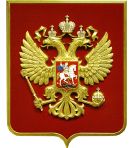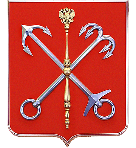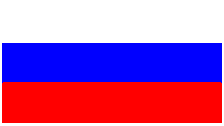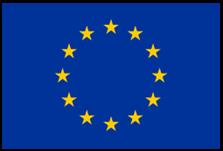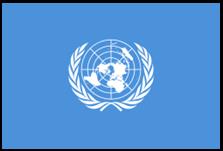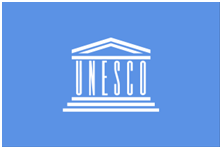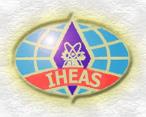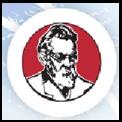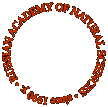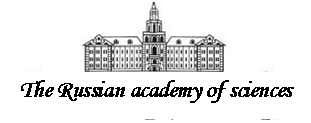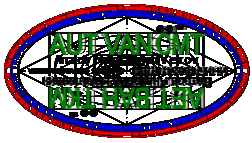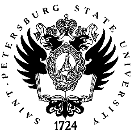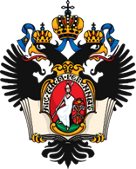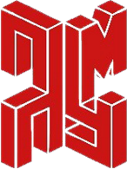Dear citizens of The Russian Federation and the foreign countries!
We invite You to take part in “The international action
of "The Saint-Petersburg state university" ("SPbSU")
on the rights of "The Federal scientific centre of RF" and "The National research university of RF",
the author of the unique cognitive modeling technology
and the scientific direction "Cognitive informatics (computer science),
the cognitive modeling technology
for the system and financial analysis" ("AUT CMT SFA") Vetrov A.N.
due to means of the budget and interested natural persons and legal entities –
the procedure of defence of the dissertation (in the form of scientific monography) on the rights of manuscript
"The environment of automated training with the properties of adaptation based on the cognitive models"
on the competition of scientific degree of the candidate of technical sciences
in spec. 05.13.01 – "The system analysis, control and information processing"
of "AUT CMT SFA" Vetrov A.N.
with participation of the national and foreign members of "The dissertation council" of "SPbSU"
for (non)residents at the international level
with translation through the global network "Internet" [is required by the new rules of “SPbSU”]
and accommodation in "The hotel "Moscow"" ("The group of hotels "Intourist"") [it is not required by the new rules of “SPbSU”]”.
The information letter – the invitation
The full information letter-invitation (download),
the booklet of information letter-invitation (download).
The organizing committee – organizers
|
1. The rector of “SPbSU”, the chairman of “The scientific council” of “SPbSU”,
“The honorary worker of justice of Russia”,
the chairman of “The authorized court of Saint-Petersburg city”,
the deputy of the chairman of “The council on science and education at The President of RF”,
doctor of jurisprudential sciences, professor Kropachev Nikolay Mikhaylovich
(the address: RF, The North-Western federal district,
199034, Saint-Petersburg city, Universitetskaya emb., h. 7-9,
Phone: +7(812)328-9701 (work), Fax: +7(812)328-9788 (work),
WWW: www.spbu.ru, Email: rector@spbu.ru).
|

|
|
2. The management of “The dissertation council” of “SPbSU”
in spec. 05.13.01 – “The system analysis, control and information processing”
from The Russian Federation (RF).
|
|
|
2.1. The chairman of “The dissertation council” of “SPbSU”
in spec. 05.13.01 – “The system analysis, control and information processing”,
the head of the chair “Modeling of social-economic systems” (“MSES”)
of the faculty “Applied mathematics – control processes” (“AM – CP”) of “SPbSU”,
doctor of physical-mathematical sciences, professor Malafeyev Oleg Alekseyevich
[the scientific specialty 01.01.09 – “Discrete mathematics
and mathematical cybernetics”]
(the address: RF, The North-Western federal district,
198504, Saint-Petersburg city, Peterhof city, Universitetsky pr., h. 35, room 335,
Phone: +7(812)428-4247 (work), Fax: +7(812)428-4247 (work),
WWW: www.spbu.ru, www.apmath.spbu.ru,
Email: malafeyevoa@mail.ru) [agree] [approved].
|

|
|
2.2. The deputy of the chairman of “The dissertation council” of “SPbSU”
in spec. 05.13.01 – “The system analysis, control and information processing”,
the dean of the faculty “Applied mathematics –
control processes” (“AM – CP”) of “SPbSU”,
the head of the chair “Mathematical theory of games
and statistical decisions” (“MTG and SD”)
of the faculty “Applied mathematics – control processes” (“AM – CP”) of “SPbSU”,
doctor of physical-mathematical sciences, professor Petrosyan Leon Aganesovich
(the address: RF, The North-Western federal district,
198504, Saint-Petersburg city, Peterhof city, Universitetsky pr., h. 35, room 320,
Phone: +7(812)428-7159 (work), Fax: +7(812)428-7159 (work),
WWW: www.spbu.ru, www.apmath.spbu.ru,
Email: l.petrosyan@spbu.ru, decan.pmpu@spbu.ru).
|

|
|
2.3. The scientific secretary of “The dissertation council” of “SPbSU”
in spec. 05.13.01 – “The system analysis, control and information processing”,
the professor of the chair “Modeling of electromechanical
and computer systems” (“MEM and CS”)
of the faculty “Applied mathematics – control processes” (“AM – CP”) of “SPbSU”,
doctor of physical-mathematical sciences, professor Kurbatova Galina Ibragimovna
(the address: RF, The North-Western federal district,
198504, Saint-Petersburg city, Peterhof city, Universitetsky pr., h. 35, room 434,
Phone: +7(812)440-1475 (work), Fax: +7(812)440-1475 (work),
WWW: www.spbu.ru, www.apmath.spbu.ru, Email: gi_kurb@mail.ru).
|

|
|
2.4. The secretary of “The dissertation council” of “SPbSU”
in spec. 05.13.01 – “The system analysis, control and information processing”,
the associate professor of the chair “Modeling of electromechanical
and computer systems” (“MEM and CS”)
of the faculty “Applied mathematics – control processes” (“AM – CP”) of “SPbSU”,
candidate of physical-mathematical sciences, associate professor Varayun Marina Ivanovna
(the address: RF, The North-Western federal district,
198504, Saint-Petersburg city, Peterhof city, Universitetsky pr., h. 35, room 441,
Phone: +7(812)428-4235 (work), Fax: +7(812)428-4235 (work),
WWW: www.spbu.ru, www.apmath.spbu.ru, Email: m.varayuan@spbu.ru).
|

|
|
3. The national members of “The dissertation council” of “SPbSU”
in spec. 05.13.01 – “The system analysis, control and information processing”
from The Russian Federation (RF).
|
|
|
3.1. The head of the chair “Modeling of social-economic systems” (“MSES”)
of the faculty “Applied mathematics – control processes” (“AM – CP”) of “SPbSU”,
doctor of physical-mathematical sciences, professor Malafeyev Oleg Alekseyevich
[the scientific specialty 01.01.09 – “Discrete mathematics
and mathematical cybernetics”]
(the address: RF, The North-Western federal district,
198504, Saint-Petersburg city, Peterhof city, Universitetsky pr., h. 35, room 335,
Phone: +7(812)428-4247 (work), Fax: +7(812)428-4247 (work),
WWW: www.spbu.ru, www.apmath.spbu.ru,
Email: malafeyevoa@mail.ru) [agreed] [approved].
The response of the chairman of “DC” of “SPbSU”, d.ph.-m.s., prof. Malafeyev O.A.
on the dissertation (in the form of scientific monography) on the rights of manuscript
of Vetrov A.N. from the 03rd of October 2020 y. –
05 sh., 05 p. (download) [RUS].
|

|
|
3.2. The vice-rector in scientific work of “The Saint-Petersburg state university
of industrial technologies and design” (“SPbSUITD”),
the head of the chair “Intellectual systems and information protection” (“IS and IP”)
of the institute “Information technologies and automation” (“IT and A”) of “SPbSUITD”,
the scientific supervisor of the laboratory “Information technologies” (“IT”) of “SPbSUITD”,
the professor of the chair “Theory of control systems
of electrophysical equipment” (“TCSEFE”)
of the faculty “Applied mathematics – control processes” (“AM – CP”) of “SPbSU”,
doctor of technical sciences, professor Makarov Avinir Gennadyevich
[the scientific specialties 05.13.01 – “The system analysis, control
and information processing”
and 05.19.01 – “Materials-science of productions of textile and light industry”]
(the address of “SPbSUITD”: RF, The North-Western federal district,
191186, Saint-Petersburg city, str. Bolshaya Morskaya, h. 18, office 301,
Phone: +7(812)315-7470 (work), Fax: +7(812)315-7470 (work),
WWW: www.sutd.ru, Email: makvin@mail.ru);
(the address of “SPbSU”: RF, The North-Western federal district,
198504, Saint-Petersburg city, Peterhof city, Universitetsky pr., h. 35, room 370,
Phone: +7(812)428-4729 (work), Fax: +7(812)428-4729 (work),
WWW: www.spbu.ru, www.apmath.spbu.ru, Email: makvin@mail.ru) [agreed] [approved].
The response of the national member of “DC” of “SPbSU”, d.t.s., prof. Makarov A.G.
on the dissertation (in the form of scientific monography) on the rights of manuscript
of Vetrov A.N. from the 21st of August 2020 y.,
certified by the official stamp of “SPbSUITD” on the 21st of August 2020 y. –
03 sh., 03 p. (download) [RUS], (download) [ENG], (download) [RUS] [ENG].
|

|
|
3.3. The chief scientific employee of the laboratory
“Intellectual transport systems” (“ITS”)
of “"The institute of transport problems named after N.S. Solomenko"
of "The Russian academy of sciences"” (“"ITP" of "RAS"”),
doctor of technical sciences, professor Duke Vyacheslav Anatolyevich
[the scientific specialty 05.13.01 – “The system analysis, control
and information processing”]
(the address: RF, The North-Western federal district,
199178, Saint-Petersburg city, the 12th line of V.I., h. 13, room 8,
Phone: +7(812)323-2954 (work), Fax: +7(812)323-2954 (work),
WWW: www.iptran.ru, Email: v_duke@mail.ru) [agreed] [approved].
The response of the national member of “DC” of “SPbSU”, d.t.s., prof. Duke V.A.
on the dissertation (in the form of scientific monography) on the rights of manuscript
of Vetrov A.N. from the 30th of September 2020 y.,
certified by the official stamp of “SPbSUITD” on the 30th of September 2020 y. –
03 sh., 03 p. (download) [RUS].
|

|
|
3.4. The professor of the chair “Mechanics of controlled movement” (“MCM”)
of the faculty “Applied mathematics – control processes” (“AM – CP”) of “SPbSU”,
doctor of physical-mathematical sciences, professor Babadzhanyants Levon Konstantinovich
[the scientific specialty 01.03.01 – “Astrometry, heavenly mechanics and star dynamics”]
(the address: RF, The North-Western federal district,
198504, Saint-Petersburg city, Peterhof city, Universitetsky pr., h. 35, room 239,
Phone: +7(812)428-4166 (work), Fax: +7(812)428-4166 (work),
WWW: www.spbu.ru, www.apmath.spbu.ru,
Email: levon-lkb@yandex.ru) [agreed] [approved] [did not agree].
|

|
|
4. The foreign members of “The dissertation council” of “SPbSU”
in spec. 05.13.01 – “The system analysis, control and information processing”
from the foreign countries.
|
|
|
4.1. The professor of the department (chair) “Mathematical modeling” (“MM”)
of the faculty “Mathematics and natural sciences” (“M and NS”)
of “The Kaunas university of technology” (“KUT”),
academician of “The Lithuanian academy of sciences” (“LAS”),
doctor of technical sciences, professor Ragulskis Minvydas Kazys
(the address of “KUT”: The republic of Lithuania (Lithuania),
LT-44249, Kaunas city, K. Donelaičio str., h. 73,
Phone: +370(37)300-000 (work), Fax: +370(37)324-144 (work),
WWW: www.lma.lt, www.ktu.lt, Email: minvydas.ragulskis@ktu.lt) [agreed] [approved].
The response of the foreign member of “DC” of “SPbSU”,
acad. “LAS”, d.t.s., prof. Ragulskis M.K.
on the dissertation (in the form of scientific monography) on the rights of manuscript
of Vetrov A.N. from the 19th of August 2020 y.,
certified by the official stamp of the faculty “M and NS” of “KUT” on the 19th of August 2020 y. –
02 sh., 02 p. (download) [RUS], (download) [ENG], (download) [RUS] [ENG].
|

|
|
4.2. The head of the department “Diaspora” (“D”)
of The Presidium of “The National academy of sciences
of The republic of Armenia” (“NAS of RA”),
the leading scientific employee of “The institute of mechanics” (“IM”) of “NAS of RA”,
the professor of the chair “Mechanics” (“M”)
of the faculty “Mathematics and mechanics” (“M and M”)
of “The Yerevan state university” (“YSU”),
doctor of physical-mathematical sciences, professor Barseghyan Vanya Rafaelovich
(the address of “NAS of RA”: The republic of Armenia (Armenia),
0019, Yerevan city, pr. Marshal Bagramyan, h. 24, room 10,
Phone: +374(10)52-36-40 (work), Fax: +374(10)52-36-40 (work),
WWW: www.sci.am, Email: barseghyan@sci.am);
(the address of “YSU”: The republic of Armenia (Armenia),
0025, Yerevan city, str. Alek Manukyan, h. 1,
Phone: +374(60)71-03-66 (work), Fax: +374(10)55-46-41 (work),
WWW: www.ysu.am, Email: barsegh@ysu.am) [agreed] [approved].
The response of the foreign member of “DC” of “SPbSU”,
acad. “NAS of RA”, d.ph.-m.s., prof. Barseghyan V.R.
on the dissertation (in the form of scientific monography) on the rights of manuscript
of Vetrov A.N. from the 31st of August 2020 y.,
certified by the head of “The general department” of The Presidium of “NAS of RA”
and the stamp of “The general department”
of The Presidium of “NAS of RA” on the 31st of August 2020 y. –
02 sh., 02 p. (download) [RUS], (download) [ENG], (download) [RUS] [ENG].
|

|
|
5. The scientific supervisor.
|
|
|
5.1. The professor of the chair “Information systems” (“IS”)
of the faculty “Applied mathematics – control processes” (“AM – CP”) of “SPbSU”,
the member of “The American mathematical society” (“AMS”),
doctor of physical-mathematical sciences, professor Kvitko Alexander Nikolaevich
(the address: RF, The North-Western federal district,
198504, Saint-Petersburg city, Peterhof city, Universitetsky pr., h. 35, room 423,
Phone: +7(812)428-4291 (work), Fax: +7(812)428-4291 (work),
WWW: www.spbu.ru, www.apmath.spbu.ru,
Email: a.kvitko@spbu.ru, alkvit46@mail.ru) [agreed] [approved].
The response of scientific supervisor,
the member of “AMS”, d.ph.-m.s., prof. Kvitko A.N.
on the dissertation (in the form of scientific monography) on the rights of manuscript
of Vetrov A.N. from the 11th of October 2018 y.,
certified by the leading specialist of “The personnel department №3”
of the faculty “AM – CP” of “SPbSU” Kudryavtseva Yu.V. on the 09th of November 2018 y. –
02 sh., 02 p. (download) [RUS], (download) [ENG], (download) [RUS] [ENG].
|

|
|
6. The scientific consultants.
|
|
|
6.1. The main scientific consultant –
the first vice-rector in scientific work
of “The Saint-Petersburg state university
of airspace instrumentation "GUAP"” (“SPbSUAI "GUAP"”),
the head of the chair “Computational mathematics and programing” (“CM and P”),
the chairman of “The dissertation council” at “SPbSUAI "GUAP"” (“HAC of RF”)
in spec. 05.13.01 – “The system analysis, control and information processing”,
“The honored worker of science of RF”,
doctor of technical sciences, professor Khimenko Vitaly Ivanovich
(the address: RF, The North-Western federal district,
190000, Saint-Petersburg city, str. Bolshaya Morskaya, h. 67,
Phone: +7(812)710-6500 (work), Fax: +7(812)710-6510 (work),
WWW: www.guap.ru, Email: vih@aanet.ru).
|

|
|
6.2. The additional scientific consultant –
the head of the chair “Modeling of electromechanical
and computer systems” (“MEM and CS”)
of the faculty “Applied mathematics – control processes” (“AM – CP”) of “SPbSU”,
the chairman of “The dissertation council” of “SPbSU”
in spec. 05.13.01 – “The system analysis, control and information processing”
and 05.13.18 – “Mathematical modeling, numerical methods and complexes of programs”,
“The honorary professor of "SPbSU"”,
academician of “The Russian academy of natural sciences” (“RANS”),
doctor of physical-mathematical sciences, professor Egorov Nikolay Vasilyevich
(the address: RF, The North-Western federal district,
198504, Saint-Petersburg city, Peterhof city, Universitetsky pr., h. 35, room 437,
Phone: +7(812)428-4235 (work), Fax: +7(812)428-4235 (work),
WWW: www.spbu.ru, www.apmath.spbu.ru, Email: n.v.egorov@spbu.ru).
|

|
|
7. The reviewers.
|
|
|
7.1. Acting as the general director
of “The federal state unitary enterprise
"Krylovsky state scientific centre"” (“FSUE "KSSC"”),
the head of the chair “Systems and means of automation of control” (“S and MAC”)
of “The Military-naval institute of radioelectronics
named after A.S. Popov” (“MNIRE n. a. A.S. Popov”)
of “The Ministry of defense of RF” (“MD of RF”),
doctor of technical sciences, associate professor, captain of the 1st rank Philippov Pavel Vasilyevich
(the address of “FSUE "KSSC"”: RF, The North-Western federal district,
196158, Saint-Petersburg city, Moskovskoe highway, h. 44,
Phone: +7(812)415-4607 (work), Fax: +7(812)727-9632 (work),
WWW: www.krylov-centre.ru, Email: krylov@ksrc.ru);
(the address of “MNIRE n. a. A.S. Popov”: RF, The North-Western federal district,
198903, Saint-Petersburg city, Petrodvorets-4 city, str. Razvodnaya, h. 15,
Phone: +7(812)450-5205 add. 265 (work), Fax: +7(812)428-5205 add. 265 (work),
WWW: www.spbvmire.ru, Email: filpw@rambler.ru).
Copy of the first positive review on the manuscript of scientific monography in the Russian language
“The environment of automated training with the properties of adaptation
based on the cognitive models”
of the head of the chair “S and MAC” of “MNIRE n. a. A.S. Popov”,
d.t.s., associate prof., cap. of the 1st rank Philippov P.V. from the 03rd of December 2007 y.,
certified by the deputy of the head of “MNIRE n. a. A.S. Popov”,
cap. of the 1st rank Kolesnichenko V.G. on the 03rd of December 2007 y.,
certified by the deputy of the head of “The personnel department” of “SPbSETU "LETI"”
Sarayev N.A. on the 10th of December 2007 y. –
9 sh., 9 p. (download) [RUS].
|

|
|
7.2. The senior assistant of the head of “The scientific-research
and editorial department” (“SR and ED”)
of “MNIRE n. a. A.S. Popov” of “MD of RF”,
candidate of technical sciences, associate prof., captain of the 2nd rank Kusov Eugeny Vladimirovich
(the address: RF, The North-Western federal district,
198903, Saint-Petersburg city, Petrodvorets-4 city, str. Razvodnaya, h. 15,
Phone: +7(812)450-5205 add. 265 (work), Fax: +7(812)428-5205 add. 265 (work),
WWW: www.spbvmire.ru, Email: info@spbvmire.ru).
Copy of the second positive review on the manuscript of sci. monography in the Russian language
“The environment of automated training with the properties of adaptation
based on the cognitive models”
The senior assistant of the head of “SR and ED” of “MNIRE n. a. A.S. Popov”,
c.t.s., associate prof., cap. of the 2nd rank Kusov E.V. from the 03rd of December 2007 y.,
certified by the deputy of the head of “MNIRE n. a. A.S. Popov”,
cap. of the 1st rank Kolesnichenko V.G. on the 03rd of December 2007 y.,
certified by the deputy of the head of “The personnel department” of “SPbSETU "LETI"”
Sarayev N.A. on the 10th of December 2007 y. –
9 sh., 9 p. (download) [RUS].
|
|
|
8. The opposing (leading) organization [it is not required by the new rules of “SPbSU”].
|
|
|
9. The official opponents [they are not required by the new rules of “SPbSU”].
|
|
|
9.1. The first official opponent [it is not required by the new rules of “SPbSU”].
|
|
|
9.2. The second official opponent [it is not required by the new rules of “SPbSU”].
|
|
|
10. The applicant of scientific degree of the candidate of technical sciences
in spec. 05.13.01 – “The system analysis, control and information processing”
(the person using the right of international defence),
the acting author, the head, the executor, the legal-owner
and potential patent owner
of the unique cognitive modeling technology and the scientific direction
“Cognitive informatics (computer science), the cognitive modeling technology
for the system and financial analysis” (“AUT CMT SFA”) Vetrov Anatoly Nikolaevich;
officially approved the objects and subjects of scientific researches
(see the diplomas and scientific works):
information-educational environments, (credit) organizations
and objects of theoretical mechanics
in spec. 05.13.01 – “The system analysis, control and information processing”
(technical and physical-mathematical sciences),
05.13.10 – “Management in the social and economic systems” (technical sciences),
19.00.02 – “Psychophysiology of perception”
(biological, medical and psychological sciences)
(19.00.03 – “Psychology of work, engineering psychology and ergonomics”
(psychological sciences)),
08.00.10 – “Finance, monetary circulation and credit” (economic sciences),
01.02.01 – “Theoretical mechanics” (physical-mathematical sciences),
there are conducting the fundamental and applied researches in the highly-technological fields
of physical chemistry (spec. 02.00.04 – “Physical chemistry”
(technical, physical-mathematical and chemical sciences))
and molecular biology (spec. 03.00.03 – “Molecular biology”
(physical-mathematical, biological, medical and agricultural-sciences))
[reference information: “the author of the unique technology”
according to the items 1542, 1543, 1544, 1545, 1546, 1547 and 1551 of “The civil codex of RF” –
the author of technology of double, threefold and more appointment in the different areas of science]
(the address: RF, The North-Western federal district,
195248, Saint-Petersburg city, pr. Energetikov, h. 36, fl. 82,
Phone: +7(812)222-5291 (home), +7(812)950-2706 (cellular),
WWW: www.vetrovan.spb.ru [the scientific-educational portal],
Email: vetrovan@nwgsm.ru, vetrovan@list.ru, vetrovan80@gmail.com).
|

|
|
11. “The hotel "Moscow"” (“The group of hotels "Intourist"”)
(RF, The North-Western federal district,
191317, Saint-Petersburg city, square Alexander Nevsky, h. 2,
Phone / Fax: +7(812)333-2444 (work),
WWW: www.hotel-moscow.ru [the official web-site of “The hotel "Moscow"”],
Email: welcome@hotel-moscow.ru) [it is not required by the new rules of “SPbSU”].
|
|
In “SPbSU” was published the video-audio-record of the defence of my dissertation
on the theme “The environment of automated training with the properties of adaptation based on the cognitive models”
on the competition of scientific degree of the candidate of technical sciences
in the specialty 05.13.01 – “The system analysis, control and information processing”
(technical sciences).
URL: www.disser.spbu.ru/zashchita-uchenoj-stepeni-spbgu/339-vetrov-anatoly.html.
The working languages
The national language – Russian language (The Russian Federation (RF)).
The international language – English language (The United kingdom of Great Britain and Northern Ireland).
The synchronous translation from the national Russian language into the international foreign English language.
Subjects
(the basic list of sciences, areas and sections
and the additional list of sciences, areas and sections –
codificators of the basic list of sciences, areas and sections,
codificators of the additional list of sciences, areas and sections
corresponds to branches and sections in “RAS” and directions and sections in “RANS”)
T.1. The list of sciences and scientific areas and codificators of sciences and scientific areas
(on the international and national classificator of scientific information organizations):
architectural sciences – arh.s.,
biological sciences (biology, pharmacology, physical-chemical bio-technology and others) – biol.s.,
veterinary-sciences – vet.s., geographical sciences – geogr.s.,
geological-meteorological sciences – geol.-met.s.,
geo-political sciences (geo-politics, safety, history and others) – geo-pol.s.,
humanitarian sciences (journalism, art, culture,
linguistics, literature, science-study, education,
psychology, religion, means of mass communication, creativity, philosophy and others) – hum.s.,
global sciences (consumer services, demography, housekeeping, housing-communal economy,
journalism, the complex studying of separate countries and regions,
complex problems natural, exact, technical, social,
applied sciences and branches of manufacture,
art, culture, mass communication, education, pedagogics, religion,
mass media means,
standardization, tourist-excursion service, trade, transport and others) – glob.s.,
natural sciences (automatics, astronomy, computer engineering, geography, geodesy, geology,
geo-physics, geo-chemistry, computer science, cartography, cybernetics, space researches, crystallography,
mathematics, mechanics, metrology, mineralogy,
modeling of The Earth and planets of The Solar system, protection of environment,
data transmission and connection, instrument-making, forecasting, radio-engineering,
the system analysis, standardization, unification, physics, chemistry, ecology,
electric-engineering, electronics, power-engineering, nuclear physics) – nat.s.,
art-sciences – art.s., historical sciences – hist.s.,
historical-philological sciences (history, language study,
linguistics, literature, oral national creativity and others) – hist.philol.s.,
culture logical sciences – cult.s.,
mathematical sciences (computer science, cybernetics, mathematics,
modeling, the system analysis and others) – math.s.,
medical sciences (public-health-services, medicine – ophthalmology and otology, labor safety,
preservation of environment, physiology, ecology and others) – med.s.,
sciences about The Earth and planets (geography, geodesy, geology, geo-physics, mining,
cartography, metallurgy, oceanology, the structure and physics of atmosphere and others) -– earth.s,
nano-technological sciences (architecture, automatics, computer engineering, light industry,
mechanical-engineering, food(-processing) industry, polygraphy, instrument-making, radio-engineering, reprography,
connection, the system analysis, construction, transport, electronics, photo-cinema-technics and others) – nano.s.,
social sciences (the state, invention, history, culture, organization, science-study,
patent business, politics, law, psychology, rationalization efficiency work, sociology, statistics,
economics, management, philosophy, finance and others) – soc.s.,
pedagogical sciences – ped.s., political sciences – pol.s.,
applied sciences (industry, agriculture and others) – appl.s.,
industrial sciences (aqua-culture, architectural, water, wood-processing, easy, wood,
food, fish, agricultural, building, chemical industry and others) – ind.s.,
psychological sciences – psy.s., agricultural-sciences – agric.s.,
sociological sciences – sociol.s., technical sciences – tech.s.,
exact sciences (hyroscope-building, mechanics, metrology, mechanical-engineering,
instrument-making, power-engineering, electric-engineering and others) – exact.s.,
pharmaceutical sciences – pharm.s.,
physical sciences (astronomy, space researches, physics,
physics of atomic nucleuses, nuclear physics and others) – phys.s.,
physical-mathematical sciences – phys.-math.s.,
philological sciences – philol.s., philosophical sciences – philos.s.,
chemical sciences – chem.s., ecological sciences – ecol.s.,
economic sciences – econ.s., jurisprudence sciences – juris.s., sports sciences – sport.s.,
military sciences (architecture, history, education, politics, construction,
technics, economics in armed forces and others) – mil.s.
Appendix: (*) – by green color marked relevant sciences and scientific areas.
Т2. The list of fundamental scientific results of “AUT CMT SFA” Vetrov A.N. –
see the list of branches and sections of fundamental scientific researches
(corresponds to branches and sections in “RAS”),
and also the list of applied scientific results of “AUT CMT SFA” Vetrov A.N. –
see the list of directions and sections of applied scientific researches
(corresponds to directions and sections in “RANS”).
Т2.1. See codificators of branches and sections of fundamental scientific researches
(corresponds to codificators of branches and sections in “RAS”).
Т2.2. See codificators of directions and sections of applied scientific researches
(corresponds to codificators of directions and sections in “RANS”).
The main spheres of scientific interests
of “AUT CMT SFA” Vetrov A.N.
the system and financial analysis and control, information technologies,
information-educational environments, systems of automated training (at distance),
innovative architectures and algorithms in the basis of automation means,
(unique) the cognitive modeling technology, (cognitive) informatics,
psychophysiology of perception, cognitive psychology and applied linguistics.
I. The fundamental scientific results in the area of the system(, financial and complex) analysis
at the micro-level for the consideration by “The dissertation council” of “SPbSU”,
and also their fundamental scientific contribution
on basic branches and different sections (branches of science)
corresponds to 13 branches and 26 sections of “RAS”.
The list of branches and sections of fundamental scientific researches
The branch 1. “Cognitive modeling in the mathematical sciences” (“OMN”)
(The scientific areas “Theoretical mathematical physics:
mathematics, complex system analysis and (cognitive) informatics”)
[“The name (nomen) of branch under the nomenclature of Vetrov A.N.”],
[(“The code of branch under the classification of "RAS" for the analysis”)].
1. Section “The theory of mathematics and the complex system analysis
based on the cognitive modeling technology” (“SM”) (*)
(received basic and derivative fundamental scientific results of CMT)
[“The name (nomen) of section under the nomenclature of Vetrov A.N.”],
[(“The code of section under the classification of "RAS" for the analysis”)].
2. Section “The theory of cybernetics and (cognitive) informatics” (“SPMI”) (*)
(received basic and derivative fundamental scientific results of CMT).
The branch 2. “Cognitive modeling in the physical sciences” (“OFN”)
(The scientific areas “Theoretical astronomical and space physics,
nuclear physics and physics of atomic nucleus”).
1. Section “The theory of physics, astronomy and space researches” (“SOFA”) (*)
(there are researching the potential possibilities of development of the theoretical bases of CMT).
2. Section “The theory of nuclear physics and physics of atomic nucleus” (“SYF”) (*)
(there are researching the potential possibilities of development of the theoretical bases of CMT).
The branch 3. “Cognitive modeling in the nano-technologies
and information technologies” (“ONIT”)
(The scientific areas “Theoretical physics and physical chemistry:
electronic components, computer engineering and connection,
nano-technologies, system analysis of physical objects, processes and phenomena”).
1. Section “The theory of electronics, radio-engineering and connection” (“SVLTSEB”)
(there are researching the potential possibilities of development of the theoretical bases of CMT).
2. Section “The theory of automatics, computer engineering and the system analysis
based on the cognitive modeling technology” (“SITA”) (*)
(received basic and derivative fundamental scientific results of CMT).
3. Section “The theory of the nano-technologies for the mechanical-engineering, instrument-making,
polygraphy, reprography and photo-cinema-technics,
the light and food(-processing) industry, transport, architecture and construction” (“SNT”) (*)
(there are researching the potential possibilities of development of the theoretical bases of CMT).
The branch 4. “Cognitive modeling in the exact sciences” (“OEMMPU”)
(The scientific areas “Theoretical physics:
mechatronics , mechanical-engineering, metrology, power-engineering and electric-engineering”).
1. Section “The theory of (theoretical) mechanics and gyroscopes” (“SM”) (*)
(there are researching the potential possibilities of development of the theoretical bases of CMT).
2. Section “The theory of mechanical-engineering, instrument-making and metrology” (“SPMPU”)
(received basic and derivative fundamental scientific results of CMT).
3. Section “The theory of power-engineering and electric-engineering” (“SE”)
(there are researching the potential possibilities of development of the theoretical bases of CMT).
The branch 5. “Cognitive modeling in the industry and chemical sciences” (“OHNM”)
(The scientific areas “Theoretical chemistry: branches of industry and economy”).
1. Section “The theory of the light, food, forest and wood-processing industry,
architecture and construction,
the agricultural, wood, water and fish economy and aqua-culture” (“SNM”) (*)
(there are researching the potential possibilities of development of the theoretical bases of CMT).
2. Section “The theory of chemistry, chemical technology and chemical industry” (“SCHN”) (*)
(there are researching the potential possibilities of development of the theoretical bases of CMT).
The branch 6. “Cognitive modeling in the biological sciences” (“OBN”)
(The scientific areas “Theoretical medicine:
biology, pharmacology and physical-chemical bio-technology”).
1. Section “The theory of biology and pharmacology” (“SOB”)
(there are researching the potential possibilities of development of the theoretical bases of CMT).
2. Section “The theory of physical-chemical bio-technology” (“SFCHB”) (*)
(there are researching the potential possibilities of development of the theoretical bases of CMT).
The branch 7. “Cognitive modeling in the physiology,
fundamental medicine and public-health-services” (“OFFM”)
(The scientific areas “Theoretical physiology and ergonomics:
(private) physiology, public-health-services, labor safety,
preservation of environment and ecology”).
1. Section “The theory of physiology, bio-physiology and private physiology” (“SF”) (*)
(received basic and derivative fundamental scientific results of CMT).
2. Section “The theory of medicine, public-health-services, labor safety,
the preservation of environment and ecology of person” (“SFM”) (*)
(there are researching the potential possibilities of development of the theoretical bases of CMT).
The branch 8. “Cognitive modeling in the sciences about The Earth” (“ONZ”)
(The scientific areas “Theoretical physics:
geo-physics, geology, mining, metallurgy, oceanology,
the structure and physics of atmosphere, geodesy, cartography and geography of The Earth and planets”).
1. Section “The theory of geo-physics, geology, mining and metallurgy” (“SGGGGN”)
(there are researching the potential possibilities of development of the theoretical bases of CMT).
2. Section “The theory of oceanology, the structure and physics of atmosphere,
geodesy, cartography and geography of The Earth and planets” (“SOFAG”)
(there are researching the potential possibilities of development of the theoretical bases of CMT).
The branch 9. “Cognitive modeling in the social sciences” (“OON”)
(The scientific areas “Theoretical micro-economics and problems of peace:
social science, philosophy, science-study,
politics, sociology, (cognitive) psychology,
state, law, patent business, invention and rationalization-work,
economics, organization, management, statistics and the financial analysis”).
1. Section “The theory of social sciences, philosophy, science-study,
politics and political sciences, sociology, (cognitive) psychology,
state, law and jurisprudential sciences, patenting business,
invention and rationalization-work” (“SFPSPP”) (*)
(there are researching the potential possibilities of development of the theoretical bases of CMT).
2. Section “The theory of the economics and economic sciences,
organization, management, statistics
and the financial analysis based on the cognitive modeling technology” (“SE”) (*)
(received basic and derivative fundamental scientific results of CMT).
The branch 10. “Cognitive modeling in the global problems
and international relations” (“OGPMO”)
(The scientific areas “Theoretical macro-economics and problems of peace:
demography, pedagogics and national education,
standardization, regional geography, science-study and manufacture,
cultural-science, art criticism, journalism and mass media means,
religion, trade, tourist-excursion service,
transport, housing-communal economy and consumer services”).
1. Section “The theory of demography, pedagogics and national education,
standardization, the complex studying of separate countries and regions,
the general and complex problems of natural, exact, technical,
public and applied sciences and manufacture branches” (“SGP”)
(there are researching the potential possibilities of development of the theoretical bases of CMT).
2. Section “The theory of culture and cultural-science, art and art-science,
mass communication, journalism and mass media means,
religion, internal trade and tourist-excursion service,
external trade, transport, housing-communal economy,
housekeeping and consumer services at the international level” (“SMO”)
(there are researching the potential possibilities of development of the theoretical bases of CMT).
The branch 11. “Cognitive modeling in the historical-philological sciences” (“OIFN”)
(The scientific areas “Theoretical problems of peace:
history, science of language, (cognitive) linguistics,
literature, literary criticism and oral national creativity”).
1. Section “The theory of history and historical sciences” (“SI”)
(there are researching the potential possibilities of development of the theoretical bases of CMT).
2. Section “The theory of science of language, (cognitive) linguistics,
literature, literary-science and oral national creativity” (“SYL”) (*)
(received basic and derivative fundamental scientific results of CMT).
The branch 12. “Cognitive modeling in the sports sciences” (“OSN”)
(The scientific areas “Theoretical medicine: sports and sports sciences”).
1. Section “The theory of competitions, sport and sports sciences” (“STSSSN”)
(there are researching the potential possibilities of development of the theoretical bases of CMT).
The branch 13. “Cognitive modeling in the military sciences” (“OVN”)
(The scientific areas “Theoretical physics, chemistry, physiology, medicine,
economics, literature and problems of peace in armed forces”).
1. Section “The theory of architecture, construction, technics, history, education,
politics and economics in the armed forces” (“STASTIOPEVS”)
(there are researching the potential possibilities of development of the theoretical bases of CMT).
(see the expanded list of sciences, branches, sections with key words,
objects of research, subjects of research
for the classification of basic and derivative fundamental scientific results
of the cognitive modeling technology – go to).
The note: (*) – by different colors marked the relevant sections and fields of science
in the different branches of fundamental scientific researches
(the contribution of basic and derivative fundamental scientific results of “AUT CMT SFA” Vetrov A.N.
into the development of different branches and sections of modern fundamental sciences).
The list of fundamental scientific results
of “AUT CMT SFA” Vetrov A.N.
(only on technical sciences and physical-mathematical sciences)
The introduction. The fundamental bases of the cognitive modeling technology
for the system analysis of the information-educational environment [slides I.1.1-I.7].
I.1. The existing contradictions, the aspects of informatization and the relevance of research [slide I.1.1].
I.2. The purpose, the object, the subject and the methods of research [slide I.1.2].
I.3. The tasks of research (dissertation research) [slide I.2.1].
I.4. The scientific results of dissertation research, submitted on defence [slide I.2.2].
I.5. The reliability of the scientific results of dissertation research and publications [slide I.2.3].
I.6. The scientific aspects of informatization of the information-educational environment
and the theoretical-methodical base of research [slides I.3.1-I.3.2].
I.7. The models and technologies of organization of interaction of the subjects and means of training
for a solution of the problem of adaptation in the information-educational environment [slides I.4.1-I.4.2].
I.8. The complex approach to the synthesis of the information-educational environment of the automated training
with the properties of adaptation based on the parametrical cognitive models block [slides I.5.1-I.5.2].
I.9. The main requirements presented
to the structure of the cognitive modeling technology
and the structure of the cognitive models of the subject of training and the means of training [slides I.6.1-I.6.2].
I.10.The genesis of “Cognitive informatics (computer science), the cognitive modeling technology
for the system and financial analysis” as the (new academic) scientific direction
(according to the decision of “The Presidium of "The Russian academy of natural science"”,
the protocol №699 from the 08th of June 2018 y.) [slide I.7].
The first scientific result. The structure of the information-educational environment
and the principles (algorithms) of functioning of the components
of the automated (remote) training system
with the properties of adaptation
based on the parametrical cognitive models block [slides 1.1-1.8.3].
1.1. The structure of the territorially distributed information-educational environment:
as the example of the geographically distributed (countries), regions and areas [slide 1.1].
1.2. The standard scheme of interaction of the information centre of educational establishment
and the automated workplaces of the subjects of training [slide 1.2.1].
1.3. The standard scheme of interaction of the automated workplaces
of the subjects of the information environment of educational establishment [slide 1.2.2].
1.4. The classification of the subjects of the information-educational environment
of the automated (remote) training [slide 1.2.3].
1.5. The transformation of information in the technological process of the formation of knowledge [slide 1.2.4].
1.6. The classification of the practical methods of extraction and transmission of information
(as the aggregate of knowledge) on the subjects of studying [slide 1.2.5].
1.7. The modifications in the organization of the information environment of educational establishment
for the support of accounting of the individual features of personality of the subjects of training [slide 1.3.1].
1.8. The modifications in the technological process of the formation of knowledge
at the realization of the automated personally-oriented training [slide 1.3.2].
1.9. The comparison of modifications in the organization and technology of automated training
for the realization of the contour of adaptation based on the parametrical cognitive models [slide 1.3.3].
1.10. The structure of the information-educational portal of educational (scientific) centre [slide 1.4.1].
1.11. The structure of the information-educational portal of teacher (scientist):
on the example of the scientific-educational portal of “AUT CMT SFA” Vetrov A.N.
(on the international foreign English language and the national Russian language) [slide 1.4.2].
1.12. The structure of the automated training system with the properties of adaptation
based on the parametrical cognitive models block [slide 1.5].
1.13. The formal description of the structure of the automated training system
with the properties of adaptation based on the cognitive models
(by means of the theory of automatic control) [slides 1.6.1-1.6.3].
1.14. The scheme, reflecting the principle (algorithm) of functioning
of the basic and applied diagnostic modules [slide 1.7.1].
1.15. The scheme, reflecting the principle (algorithm) of functioning of the electronic textbook
with adaptation based on the parametrical cognitive models block [slide 1.7.2].
1.16. The features of architecture of the adaptive electronic textbook [slide 1.7.3].
1.17. The information structure of the subject of studying, displayed
at the level of representation of data by means of the electronic textbook [slide 1.7.4].
1.18. The schemes of realization of branching (1 – correct answer, 0 – wrong answer):
at the left – linear model and at the right – branched model [slide 1.7.5].
1.19. The algorithm of processing of events initiated by the user
in the adaptive means of training (electronic textbook) [slide 1.7.6].
1.20. The semantic model of representation of information in the adaptive electronic textbook [slide 1.7.7].
1.21. The structurally-functional scheme
of the adaptive representation of information fragments processor [slides 1.8.1-1.8.3].
The second scientific result. The cognitive modeling technology,
including the technique of its use,
the recommended innovative bases (models)
and the algorithm of formation of the structure of cognitive model,
the techniques of the research of the parameters of cognitive models,
the algorithm of processing of a posteriori data of testing [slides 2.1.1-2.7.2].
2.1. The iterative cycle of the cognitive modeling technology [slides 2.1.1-2.1.2].
2.2. The technique of use of the cognitive modeling technology
(for the tasks of the analysis of the information-educational environment
of automated training) [slides 2.2.1-2.2.2].
2.3. The recommended bases for the construction of the structure of cognitive model [slide 2.3].
2.4. The recommended basis for the construction of the structure of cognitive model
in the view of the oriented graph combining the theory of sets [slide 2.3.1].
2.5. The recommended basis for the construction of the structure of cognitive model
in the view of the structural scheme (without connections between information elements) [slide 2.3.2].
2.6. The representation of the structure of cognitive model by means of the frame model [slide 2.3.3].
2.7. The representation of the structure of cognitive model by means of the semantic network [slide 2.3.4].
2.8. The infological scheme of database for the representation of the structure of cognitive model [slide 2.3.5].
2.9. The algorithm of formation of the structure of cognitive model
for the analysis of the information-educational environment of the automated training [slides 2.4.1-2.4.2].
2.10. The technique of research of parameters of the cognitive model of the subject of training [slides 2.5.1-2.5.2].
2.11. The technique of research of parameters of the cognitive model of the means of training [slides 2.6.1-2.6.2].
2.12. The algorithm of processing of a posteriori data of testing [slides 2.7.1-2.7.2].
The third scientific result. The parametrical cognitive models block,
including the structure of the parametrical cognitive model of the subject of training
and the structure of the parametrical cognitive model of the means of training
[slides 3.1-3.8].
3.1. The structure of the parametrical cognitive model of the subject of training
(the multilevel structural scheme combining the theory of mathematical sets)
[the theoretical structure of cognitive model
with wide scientific justification:
cognitive informatics (computer science), psychophysiology of perception,
cognitive psychology and applied linguistics] [slide 3.1].
3.2. The structure of the parametrical cognitive model of the means of training
(the multilevel structural scheme combining the theory of mathematical sets)
[the theoretical structure of cognitive model
with wide scientific justification:
cognitive informatics (computer science), psychophysiology of perception,
cognitive psychology and applied linguistics] [slide 3.2].
3.3. The structure of the modified model of reduced eye of human
(the cognitive model of reduced eye of human)
[the theoretical and experimental structure of cognitive model
with wide scientific justification:
cognitive informatics (computer science), psychophysiology of perception,
ophthalmology and micro-surgery of eye] [slide 3.3].
3.4. The structure of the modified model of reduced ear of human
(the cognitive model of reduced ear of human)
[the theoretical and experimental structure of cognitive model
with wide scientific justification:
cognitive informatics (computer science), psychophysiology of perception,
otology and micro-surgery of ear] [slide 3.4].
3.5. *The structure of the cognitive model of chemical element (nuclear polymer)
with two nucleus (plasmatic formations)
in the view of the two-cognitive sphere
[the experimental structure of cognitive model
with narrow scientific justification:
cognitive informatics (computer science), physics of atomic nucleuses, physics of plasma and physical chemistry;
developed by “AUT CMT SFA” Vetrov A.N. by means of modeling and scientific visualization
before the official decision about the acknowledgement of fact of the synthesis
of the nuclear polymers with two nucleus (or areas of plasma)
by “The international association of theoretical and applied chemistry”:
at-first,- for the purposes of potential possibility of realization of the complex analysis
of the structure of the difficult chemical elements (nuclear polymers)
as the plasmatic formations with the evidently (not evidently) pronounced two nucleus (the areas of plasma);
at-second,- for the support of potential possibility of studying (modeling)
of the difficult physical phenomena of nuclear convergence and divergence (at the micro-level)] [slide 3.5].
3.6. *The structure of the cognitive model of chemical element (nuclear polymer)
with three nucleus (plasmatic formations)
in the view of the three-cognitive sphere
[the experimental structure of cognitive model
with narrow scientific justification:
cognitive informatics (computer science), physics of atomic nucleuses, physics of plasma and physical chemistry;
developed by “AUT CMT SFA” Vetrov A.N. by means of modeling and scientific visualization
before the official decision about the acknowledgement of fact of the synthesis
of the nuclear polymers with three nucleus (or areas of plasma)
by “The international association of theoretical and applied chemistry”:
at-first,- for the purposes of potential possibility of realization of the complex analysis
of the structure of the difficult chemical elements (nuclear polymers)
as the plasmatic formations with the evidently (not evidently) pronounced three nucleus (the areas of plasma);
at-second,- for the support of potential possibility of studying (modeling)
of the difficult physical phenomena of nuclear convergence and divergence (at the micro-level)] [slide 3.6].
3.7. *The structure of the cognitive model of chemical element (nuclear polymer)
with four nucleus (plasmatic formations)
in the view of the four-cognitive sphere
[the experimental structure of cognitive model
with narrow scientific justification:
cognitive informatics (computer science), physics of atomic nucleuses, physics of plasma and physical chemistry;
developed by “AUT CMT SFA” Vetrov A.N. by means of modeling and scientific visualization
before the official decision about the acknowledgement of fact of the synthesis
of the nuclear polymers with four nucleus (or areas of plasma)
by “The international association of theoretical and applied chemistry”:
at-first,- for the purposes of potential possibility of realization of the complex analysis
of the structure of the difficult chemical elements (nuclear polymers)
as the plasmatic formations with the evidently (not evidently) pronounced four nucleus (the areas of plasma);
at-second,- for the support of potential possibility of studying (modeling)
of the difficult physical phenomena of nuclear convergence and divergence (at the micro-level)] [slide 3.7].
3.8. *The structure of the cognitive model of chemical element (nuclear polymer)
with five (and more) nucleus (plasmatic formations)
in the view of the five (and more)-cognitive sphere
[the experimental structure of cognitive model
with narrow scientific justification:
cognitive informatics (computer science), physics of atomic nucleuses, physics of plasma and physical chemistry;
developed by “AUT CMT SFA” Vetrov A.N. by means of modeling and scientific visualization
before the official decision about the acknowledgement of fact of the synthesis
of the nuclear polymers with five (and more) nucleus (or areas of plasma)
by “The international association of theoretical and applied chemistry”:
at-first,- for the purposes of potential possibility of realization of the complex analysis
of the structure of the difficult chemical elements (nuclear polymers)
as the plasmatic formations with the evidently (not evidently) pronounced five (and more) nucleus (the areas of plasma);
at-second,- for the support of potential possibility of studying (modeling)
of the difficult physical phenomena of nuclear convergence and divergence (at the micro-level)] [slide 3.8].
The note: * – by “AUT CMT SFA” Vetrov A.N. are presented the additional examples
of the experimental cognitive models of chemical elements (nuclear polymers),
which are received by the method of computer modeling and scientific visualization.
II. The applied scientific results in the area of the system(, financial and complex) analysis
at the micro-level for the consideration by “The dissertation council” of “SPbSU”,
and also their applied scientific contribution
on basic directions and different sections (branches of science)
of applied scientific researches of “AUT CMT SFA” Vetrov A.N.
corresponds to 9 directions and 27 sections of “RANS”.
The list of directions and sections of applied scientific researches
The direction 1. “Cognitive modeling in the natural sciences” (“NEN”)
(The scientific areas “Applied physics:
computer science, mathematics, mechanics, metrology, astronomy,
(complex) system analysis, geography, electric-engineering,
nuclear power-engineering, instrument-making and other sciences”)
[“The name (nomen) of direction under the nomenclature of Vetrov A.N.”],
[(“The code of direction under the classification of "RANS" for the analysis”)].
1. Section “The applications of (cognitive) informatics, cybernetics,
automatics, computer engineering, data transmission and connection” (“SIC”) (*)
(received basic and derivative applied scientific results of CMT)
[“The name (nomen) of section under the nomenclature of Vetrov A.N.”],
[(“The code of section under the classification of "RANS" for the analysis”)].
2. Section “The applications of mathematics, mathematical physics,
mechanics, metrology, astronomy, space researches,
the complex system analysis based on the cognitive modeling technology
and complex problems of natural sciences” (“SMMF”) (*)
(there are researching the potential possibilities of application of CMT).
3. Section “The applications of the models of The Earth and The Solar system planets
in the geography, geology, geodesy, cartography, astronomy and other sciences” (“SNZ”) (*)
(there are researching the potential possibilities of application of CMT).
4. Section “The applications of the system analysis based on the cognitive modeling technology,
prediction, standardization, unification
and complex problems of the exact technical science” (“SSAP”) (*)
(received basic and derivative applied scientific results of CMT).
5. Section “The applications of theoretical and experimental
physics, geo-physics, power-engineering, electric-engineering, electronics and radio-engineering,
nuclear physics, technics and instrument-making” (“SF”) (*)
(there are researching the potential possibilities of application of CMT).
The direction 2. “Cognitive modeling in the natural sciences” (“NEN”)
(The scientific areas “Applied (non)organic chemistry:
geology, geo-chemical ecology and chemical industry”).
1. Section “The applications of (non)organic chemistry,
crystallography, mineralogy and chemical industry” (“SH”) (*)
(there are researching the potential possibilities of application of CMT).
2. Section “The applications of the models, methods and technologies
of the geology of oil and gas and the oil and gas industry” (“SNG”)
(there are researching the potential possibilities of application of CMT).
3. Section “The applications of geo-chemical ecology and preservation of environment” (“SNOS”)
(there are researching the potential possibilities of application of CMT).
The direction 3. “Cognitive modeling in applied technical sciences and technologies” (“NNT”)
(The scientific areas “Applied physics:
noo-sphere and its technologies, mechanical-engineering,
photo-cinema-technics and branches of industry”).
1. Section “The applications of the noo-sphere knowledge and technologies:
the (heavy) mechanical-engineering, instrument-making,
polygraphy, reprography and photo-cinema-technics, the easy and food(-processing) industry,
transport, architecture, construction and other branches” (“SNZT”) (*)
(there are researching the potential possibilities of application of CMT).
The direction 4. “Cognitive modeling in applied technical sciences and technologies” (“NNT”)
(The scientific areas “Applied chemistry:
methods and technologies of extraction, processing and use
of the rock, metal, tree and agro-industrial production”).
1. Section “The applications of mining and metallurgy” (“SGM”)
(there are researching the potential possibilities of application of CMT).
2. Section “The applications of sciences about wood and wood processing” (“SNL”)
(there are researching the potential possibilities of application of CMT).
3. Section “The applications of the scientific problems of agro-industrial complex” (“SNPAK”)
(there are researching the potential possibilities of application of CMT).
The direction 5. “Cognitive modeling in the geo-political sciences and researches” (“NSGI”)
(The scientific areas “Applied macro-economics:
geo-politics, safety and history”).
1. Section “The applications of geo-politics and safety” (“SGB”)
(there are researching the potential possibilities of application of CMT).
2. Section “The applications of classical and military history” (“SVIT”)
(there are researching the potential possibilities of application of CMT).
The direction 6. “Cognitive modeling in the society steady development
of post-industrial country” (“NURS”)
(The scientific areas “Applied economics of country:
regional geography and social science”).
1. Section “The applications of complex problems of country development” (“SPUR”) (*)
(there are researching the potential possibilities of application of CMT).
The direction 7. “Cognitive modeling in the social-economic
and jurisprudential sciences” (“NSEPP”)
(The scientific areas “Applied micro-(macro-)economics:
politics, law, market economy, management, sociology, statistics,
financial analysis, accounting, audit and other branches”).
1. Section “The applications of inter-branch jurisprudential and economic
system researches of society and country” (“SMEESI”)
(there are researching the potential possibilities of application of CMT).
2. Section “The applications of the complex problems of micro-(macro-)economics,
social sphere and market economy of country” (“SPMSRH”)
(there are researching the potential possibilities of application of CMT).
3. Section “The applications of economics, management,
sociology, statistics and their other branches” (“SES”)
(there are researching the potential possibilities of application of CMT).
4. Section “The applications of the financial analysis, accounting and audit of the (credit) organization
based on the cognitive modeling technology” (“SFABUA”) (*)
(received basic and derivative applied scientific results of CMT).
The direction 8. “Cognitive modeling in the biological and medical sciences” (“NBME”)
(The scientific areas “Applied physiology and medicine:
vegetative and generative growth of plants and animals”).
1. Section “The applications of biology, ecology and physiology of plants” (“SBE”)
(there are researching the potential possibilities of application of CMT).
2. Section “The applications of bio-technology, bio-medicine,
ergonomics and labor safety of organic individuals” (“SB”) (*)
(there are researching the potential possibilities of application of CMT).
The direction 9. “Cognitive modeling in the humanitarian sciences,
art and creativity” (“NGNOT”)
(The scientific areas “Applied problems of peace:
(cognitive) linguistics, (national) creativity,
culture, art, religion, literature, science-study,
philosophy, journalism, (cognitive) psychology, education,
science and young scientists, encyclopedias, innovations and investments”).
1. Section “The applications of (cognitive) linguistics,
(national) creativity, culture, art and religion” (“SGNT”) (*)
(there are researching the potential possibilities of application of CMT).
2. Section “The applications of literature, science-study, philosophy,
journalism and mass communication means” (“SLPZ”) (*)
(there are researching the potential possibilities of application of CMT).
3. Section “The applications of the problems of (cognitive) psychology, education,
science and the support of young scientists (the programs of grants and others)” (“SPOPMU”) (*)
(there are researching the potential possibilities of application of CMT).
4. Section “The applications of the innovations of the project "The Russian encyclopedias",
philosophy of science, technics and technology on the branches of knowledge” (“SRE”)
(there are researching the potential possibilities of application of CMT).
The direction 10. “Cognitive modeling in the physical training and sport” (“NFS”)
(The scientific areas “Applied medicine and physiology:
physical training and sport”).
1. Section “The applications of sport, sports sciences and actions” (“SSSNM”)
(there are researching the potential possibilities of application of CMT).
The direction 11. “Cognitive modeling in the military sciences” (“NVN”)
(The scientific areas “Applied military physical, chemical
and other methods and technologies:
architecture, construction and technics, politics and economics,
literature, education, history and problems of peace”).
1. Section “The applications of architecture, construction, technics, history, education,
politics and economics in the armed forces” (“SASTIOPEVC”)
(there are researching the potential possibilities of application of CMT).
(see the expanded list of sciences, directions, sections with key words,
objects of research, subjects of research
for the classification of basic and derivative applied scientific results
of the cognitive modeling technology – go to)
The note: (*) – by different colors marked the relevant sections and fields of science
in the different directions of applied scientific researches
(the contribution of basic and derivative applied scientific results of “AUT CMT SFA” Vetrov A.N.
into the development of different directions and sections of modern fundamental sciences).
The list of applied scientific results
of “AUT CMT SFA” Vetrov A.N.
(only on technical sciences and physical-mathematical sciences)
The forth scientific result. The complex of programs for the automation of research tasks
of the information-educational environment
based on the parametrical cognitive models block,
including the adaptive electronic textbook
(the individually-oriented generation of educational influences
by means of the adaptive representation
of information fragments processor),
the basic diagnostic module (the estimation of level of residual knowledge of trainee)
and the applied diagnostic module
(the diagnostics of parameters of the cognitive model of the subject of training)
[slides 4.1.1-4.20.1].
4.1. The structurally-functional scheme of the complex of programs
for the automation of research tasks [slides 4.1.1-4.1.2].
4.2. The algorithm of primary initialization of database and switching of the modes of functioning
of the complex of programs for the automation of tasks of the system analysis [slides 4.2.1-4.2.2].
4.3. The algorithm of authentication of a user in the automated training system [slide 4.3.1].
4.4. The interface of the complex of programs in the mode of main button form:
the basic diagnostic module [slide 4.3.2].
4.5. The algorithm of filling of content of the adaptive electronic textbook
on the basis of the information (the semantic) model of a subject of studying [slides 4.4.1-4.4.2].
4.6. The algorithm of extraction of information fragments
of the adaptive means of training (electronic textbook)
on the basis of the adaptive representation of information fragments processor [slides 4.5.1-4.5.2].
4.7. The algorithm of functioning of the adaptive electronic textbook jointly
with the diagnostic module (realized the more precise definition
of the level of statement of material) [slides 4.6.1-4.6.2].
4.8. The interface of the adaptive electronic textbook in the mode of administrating:
the review and modification of the parameters of the subjects of studying [slide 4.7.1].
4.9. The interface of the adaptive electronic textbook in the mode of administrating:
the review and modification of the parameters of units of the subject of studying [slide 4.7.2].
4.10. The interface of the adaptive electronic textbook in the mode of administrating:
the review and modification of the parameters of modules of unit of the subject of studying [slide 4.7.3].
4.11. The interface of the adaptive electronic textbook in the mode of administrating:
the review and modification of the parameters of page of module of unit of the subject of studying
(the localization of interface in the international foreign English language) [slide 4.7.4].
4.12. The interface of adaptive electronic textbook in the mode of administrating:
the review and modification of the parameters of page of module of unit of the subject of studying
(the localization of interface in the national Russian language) [slide 4.7.5].
4.13. The administrating of database with the values of parameters of the parametrical cognitive models block:
the review and modification of the parameters of the cognitive model of the subject of training [slide 4.8.1].
4.14. The administrating of database with the values of parameters of the parametrical cognitive models block:
the review and modification of the parameters of the cognitive model of the means of training [slide 4.8.2].
4.15. The interface of the adaptive electronic textbook in the mode of adaptive training:
the textual representation of information fragment (text) [slide 4.9.1].
4.16. The interface of the adaptive electronic textbook in the mode of adaptive training:
the graphic representation of information fragment (flat scheme) [slide 4.9.2].
4.17. The algorithm of functioning of the mode of administrating
of the basic diagnostic module [slides 4.10.1-4.10.2].
4.18. The algorithm of functioning of the mode of diagnostics in the form of testing
of the basic diagnostic module [slides 4.11.1-4.11.2].
4.19. The interface of the basic diagnostic module in the mode of administrating [slide 4.12.1].
4.20. The interface of the basic diagnostic module in the mode of diagnostics
(the version for the carrying out of express diagnostics, without the use of graphic images) [slide 4.12.2].
4.21. The algorithm of functioning of the applied diagnostic module
in the mode of administrating of the question-answers structures
of the methods of research of the individual features of the contingent of examinees [slides 4.13.1-4.13.2].
4.22. The algorithm of functioning of the applied diagnostic module
in the mode of diagnostics of the individual features of the contingent of examinees [slides 4.14.1-4.14.2].
4.23. The interface of the applied diagnostic module in the mode of administrating
of the question-answers structures of the method of research of the color perception of Rabkin E.B. [slide 4.15.1].
4.24. The interface of the applied diagnostic module in the mode of diagnostics
of the color perception by means of the method of research of Rabkin E.B. [slide 4.15.2].
4.25. The interface of the applied diagnostic module in the mode of administrating
of the question-answers structures of the subtest of plane thinking
by means of the eighth block of questions “Plane figures” of the method of research of Amthauer R. [slide 4.16.1].
4.26. The interface of the applied diagnostic module in the mode of diagnostics of the plane thinking
by means of the eighth block of questions “Plane figures” of the method of research of Amthauer R. [slide 4.16.2].
4.27. The interface of the applied diagnostic module in the mode of administrating
of the question-answers structures of the subtest of figurative creativity
by means of the method of research of Torrance E.P. [slide 4.17.1].
4.28. The interface of the applied diagnostic module in the mode of diagnostics
of the figurative creativity by means of the method of research of Torrance E.P. [slide 4.17.2].
4.29. The mathematical model of the pherical perimeter of Forster K.F.R. [slide 4.18.1].
4.30. The features of a posteriori data of research of the achromatic
and chromatic field of vision of examinee [slide 4.18.2].
4.31. The interface of the applied diagnostic module in the mode of administrating
of the question-answers structures of the method of research of the achromatic
and chromatic field of vision of examinee by means of the computer perimetry:
the parameters of the method of research [slide 4.19.1].
4.32. The interface of the applied diagnostic module in the mode of administrating
of the question-answers structures of the method of research of the achromatic
and chromatic field of vision of examinee by means of the computer perimetry:
the parameters of display [slide 4.19.2].
4.33. The interface of the applied diagnostic module in the mode of administrating
of the question-answers structures of the method of research of the achromatic
and chromatic field of vision of examinee by means of the computer perimetry:
the parameters of database [slide 4.19.3].
4.34. The interface of the applied diagnostic module in the mode of diagnostics of the achromatic
and chromatic field of vision of examinee by means of the computer perimetry [slide 4.20.1].
The fifth scientific result. The statistical justification of the practical use of the received results
(by means of the preliminary processing of a posteriori data,
the secondary processing of selections of a posteriori data:
some results of the regression analysis, the discriminant analysis,
multidimensional scaling and the factor analysis) (*) [slides 5.1-5.6.2].
5.1. The scheme, reflecting the sequence of actions
for the support of researches of the cycle of adaptive automated training [slide 5.1].
5.2. The summary results of the mathematical processing of a posteriori data of the experiment [slides 5.2.1-5.2.4].
5.3. The results of the regression analysis [slides 5.3.1-5.3.3].
5.4. The results of the discriminant analysis:
own values for the canonical discriminant functions [slide 5.4.1]
and the position of centroids of classes in the space of two discriminant functions [slide 5.4.2].
5.5. The results of the multidimensional scaling [slide 5.5.1].
5.6. The results of the factor analysis [slide 5.5.2].
5.7. The dynamics of the indicators of efficiency (resultativity)
of the technological process of controlled formation of knowledge of trainees [slides 5.6.1-5.6.2].
The note: * – recommended to acquaintance
with the reports on the individual initiative SRW of “AUT CMT SFA” Vetrov A.N.
The materials of dissertation (in the form of scientific monography)
on the rights of manuscript
on the theme “The environment of automated training with the properties of adaptation
based on the cognitive models”
on the competition of scientific degree of the candidate of technical sciences
in spec. 05.13.01 – “The system analysis, control and information processing”
(technical sciences)
1. My autoabstract of candidate dissertation (in the form of scientific monography) on the rights of manuscript on technics –
the version of 2007 y. (download) [RUS], the version of 2017 y. (download) [RUS], the version of 2018 y. for the defence (download) [ENG],
the version of 2019 y. for the defence (download) [ENG] and the version of 2020 y. for the defence (download) [ENG] [it is not required by the new rules of “SPbSU”].
2. My posters (slides) of candidate scientific report on technics –
the version of 2007 y. (download) [RUS], the version of 2017 y. (download) [RUS], the version of 2018 y. for the defence (download) [ENG],
the version of 2019 y. for the defence (download) [ENG] and the version of 2020 y. for the defence (download) [ENG].
3. My manuscript of candidate dissertation (in the form of scientific monography) on the rights of manuscript on technics –
Vetrov A.N. The environment of automated training with the properties of adaptation based on the cognitive models:
the dissertation – the attestation work (in the form of scientific monography) on the rights of manuscript
(technical, physical-mathematical and medical sciences)
(spec. 05.13.01, 05.13.10, 19.00.02 (19.00.03)) / A.N. Vetrov;
“The S.-Petersburg.st.un-ty”. – SPb.: “SPbSETU "LETI"”, 2005,
M.: “RAS”, 2007, SPb.: “SPbSU”, 2018, 2020. – 272 p. (256 p.):
79 pic., 29 tab. – Bibliogr. 35 (85) nom. – Eng. – Dep. in “RAS”, 2007. –
the version of 2007 y. (download) [RUS], the version of 2017 y. (download) [RUS], the version of 2018 y. for the defence (download) [ENG],
the version of 2019 y. for the defence (download) [ENG] and the version of 2020 y. for the defence (download) [ENG].
The main list of scientific works
on technical sciences and physical-mathematical sciences
for the attestation of the applicant of scientific degree of the candidate of technical sciences
in spec. 05.13.01 – “The system analysis, control and information processing”,
“AUT CMT SFA” Vetrov A.N.
(go to)
[see the full list of scientific works on the technical, physical-mathematical, economic and philosophical sciences –
(go to) –
reflect the concept “interdisciplinarity” in the modern science,
for the substantiation of genesis of the academic scientific direction
“Cognitive informatics (computer science), the cognitive modeling technology
for the system and financial analysis” –
see “The register of new scientific directions” of “The Russian academy of natural science” (“RANS”)
(according to the decision of “The Presidium of "RANS"”, the protocol №699 from the 08th of June 2018 y.) (go to),
see the encyclopedia “Famous scientists” of “RANS”
(according to the decision of “The Presidium of "RANS"”) (go to)].
The title of print manuscript (the scientific monography)
format *.pdf (download).
The table of contents of the print manuscript (the scientific monography)
for the attestation of the applicant of scientific degree of the candidate of technical sciences
in spec. 05.13.01 – “The system analysis, control and information processing”,
“AUT CMT SFA” Vetrov A.N.
(go to).
The list of documents
for the attestation of the applicant of scientific degree of the candidate of technical sciences
in spec. 05.13.01 – “The system analysis, control and information processing”,
“AUT CMT SFA” Vetrov A.N.
(go to).
The scientific-educational portal – information resource
www.vetrovan.spb.ru
of the applicant of scientific degree of the candidate of technical sciences
in spec. 05.13.01 – “The system analysis, control and information processing”,
“AUT CMT SFA” Vetrov A.N.
(for the methodical support of students learning the disciplines
“Informatics” and “Finance, monetary circulation and credit”,
and also for the propaganda of creation, distribution and use
of the basic and derivative fundamental and applied scientific results of the cognitive modeling technology)
(go to).
The requirements, order of representation and list of necessary documents
sufficient for the participation
(the basic requirements, the order of representation and projects of documents for the participation)
In organizing committee of the specified international action it is necessary to present urgently
the list of documents and electronic files – the support of participation (performance) of national and foreign
members of “The dissertation council” of “SPbSU” (RF, Saint-Petersburg city):
1. The documents on sheets of format А4
for the participation of the national or foreign member of “The dissertation council” of “SPbSU”
from the organization-participant (resident – RF or non-resident – the foreign country).
1.1. The application form for the participation in the specified international action
from the national or foreign member of “The dissertation council” of “SPbSU”
to the name of the head of organization-participant,
the management of “The dissertation council” of “SPbSU”
and the applicant of scientific degree (the person using the right of international defence),
“AUT CMT SFA” Vetrov A.N. – minimum 1 sh., 1 p. (see the appendix 1 – download).
1.2. The invitation to the national or foreign member of “The dissertation council” of “SPbSU”
from the head of organization-participant for the representation of formulation of question
and (or) the performance with certain scientific report and (or) multimedia-presentation
on the specified international action due to means of the budget of the (foreign) country –
minimum 1 sh., 2 p. (see the appendix 2 – download),
[only for the invitation of the potential (supposed)
national or foreign member of “The dissertation council” of “SPbSU”].
1.3. The service record to the name of the head of organization-participant,
the management of “The dissertation council” of “SPbSU”
and the applicant of scientific degree (the person using the right of international defence),
“AUT CMT SFA” Vetrov A.N.
from the national or foreign member of “The dissertation council” of “SPbSU”
for the representation of question and (or) performance with scientific report and (or) multimedia-presentation
for the statement by the organizing committee of specified international action –
minimum 1 sh., 2 p. (see the appendix 3 – download).
1.4. The application form for the participation of educational, scientific and other organization
with the appendix of the list of allowed
national or foreign members of “The dissertation council” of “SPbSU”,
formulations of their questions and (or) themes of their scientific reports and (or) multimedia-presentations
from the organization-participant for the sending to the organizing committee of specified international action
with signatures of the head of organization-participant,
the national or foreign member of “The dissertation council” of “SPbSU”,
executors and normocontrollers on physical-mathematical, technical,
economic and other sciences (the list, see the appendix 4 – download),
and also the service records of the national or foreign members of “The dissertation council” of “SPbSU”
with signature of the national or foreign member of “The dissertation council” of “SPbSU”
to the name of the head of organization-participant,
the management of “The dissertation council” of “SPbSU”
and the applicant of scientific degree (the person using the right of international defence),
“AUT CMT SFA” Vetrov A.N.
into the three specified addresses –
minimum 3 sh., 3 p. (the service record, see the appendix 3 – download),
(the application, see the appendix 5 – download)
[only at the consent of the head of organization-participant
to give out (to hand over) the official diploma of standard (state) sample
of the educational or scientific establishment (organization) of the foreign country].
1.5. The details about the member of “The dissertation council” of “SPbSU”
(the data about basic and additional employees of attendance personnel)
to the organizing committee of specified international action,
in particular specify “Last name, First name and Patronymic
of the national or foreign member of “The dissertation council” of “SPbSU”
(the basic and (or) additional employee of attendance personnel)” (completely),
“The name of organization and name of subordinated organization” (completely),
“The name of division in the (subordinated) organization”,
“The post, scientific degree and scientific rank”,
“The work address (the legal and actual)”
[“Index of work address of member”, “Country of work address of member”, “City of work address of member”,
“Street of work address of member”, “House of work address of member”,
“Cabinet (office) of work address of member”, “Floor of work address of member”],
“The home address (the legal and actual)”
[“Index of home address of member”, “Country of home address of member”, “City of home address of member”,
“Street of home address of member”, “House of home address of member”,
“Flat of home address of member”, “Floor of home address of member”],
“The phone and fax (the work, home and mobile or cellular)
[+”Code of country” (“Code of region or city”) “Number of phone”],
[+”Code of country” (“Code of region or city”) “Number of fax”],
“The electronic addresses (the work and home electronic address
of information resource and electronic post)”,
“The additional information about the place of work and home”,
“The data about publications”, “The sphere of scientific interests” –
minimum 1(3) sh., 1(3) p. (see the appendix 6 – download)
[only for the organization of specified international action
in “SPbSU” (RF, Saint-Petersburg city)].
1.6. The expert judgment about the opportunity of publication of the materials
of question and (or) scientific report and (or) multimedia-presentation
of the national or foreign member of “The dissertation council” of “SPbSU” in the open print
(for the broadcasting of materials through the global network “Internet”
and publication of the collections of questions and (or) scientific reports and (or) multimedia-presentations
of the specified international action) – minimum 1 sh., 1 p.
[can be absent, but prepares by the management of “The dissertation council” of “SPbSU”].
1.7. The review on the question and (or) scientific report and (or) multimedia-presentation
of the national or foreign member of “The dissertation council” of “SPbSU”
of the specialist (expert) in the subject area (in the specialty) – minimum 1 sh., 1 p.
[can be absent, but prepares by the management of “The dissertation council” of “SPbSU”].
1.8. The question and (or) scientific report in the format “MS Word” *.doc
and (or) multimedia-presentation in the format “MS Power Point” *.ppt
of the certain national or foreign member of “The dissertation council” of “SPbSU”
in the printed out kind on the sheets of format А4
(see the requirements to volume for the experts, engineers,
candidates, doctors and academicians of sciences) – minimum 1 sh., 1 p.
[the question and (or) scientific report and (or) multimedia-presentation
taking in the obligatory order
only from the allowed members of “The dissertation council” of “SPbSU”,
which have the scientific degree of doctor or academician of sciences;
the question and (or) scientific report and (or) multimedia-presentation
taking in the initiative order
from all allowed specialists (experts) and engineers (in the specialty),
which have not the scientific degree
or have the scientific degree of candidate, doctor or academician of sciences].
1.9. The recommendation letter of external organization about the opportunity of publication (broadcasting)
of the materials of question and (or) scientific report and (or) multimedia-presentations
of the national or foreign member of “The dissertation council” of “SPbSU”
in the collection and (or) scientific journal (global network “Internet”)
before, in process and after the specified international action – minimum 1 sh., 1 p.
[prepares by the authorized employee of external organization
only in the case of presence of confidential and (or) secret information].
1.10. The covering letter
with the signature of the national or foreign member of “The dissertation council” of “SPbSU”
and the head of educational, scientific and other organization
with the indication in the appendix of the specified documents
and the appendix of the specified documents actually (item 1.1-item 1.9) – minimum 1 sh., 2 p.
2. The electronic files on the optical carrier of information for the laser storage of information
CD-ROM or DVD-ROM with the electronic version of specified documents in the format *.pdf,
in the particular with the question and (or) scientific report in the format *.doc
and (or) multimedia-presentation in the format *.ppt – minimum 1 CD-ROM.
(see the expanded requirements, the order of representation and projects of documents
with the instruction of filling for the participation – go to)
The requirements to registration and representation
of question and (or) scientific report and (or) multimedia-presentation
on the international action in “SPbSU” (RF, Saint-Petersburg city)
(the basic requirements, the order of representation and projects of documents for the participation)
The question and (or) scientific report and (or) multimedia-presentation
should be corrected and edited, completely finished,
to correspond to the scientific publication and state educational and scientific standards:
1. It is recommended to use: in the process of work – the textual editor “MS Word” (the file of format “MS Word” *.doc)
and in the process of formatting – the style file “MAIK Science / Interperiodica” (in the case of difficulties).
2. The form-factor (format) of the electronic and paper carrier of information: “А4” (the paper for the office technics).
3. The parameters of the model of page: top field “3 cm.”, bottom field “2 cm.”, left field “3 cm.”, right field “2 cm.”,
top colontitular “1,25 cm.”, bottom colontitular “1,25 cm.”, orientation “book” or “album”.
4. The parameters of text of the question and (or) scientific report and (or) multimedia-presentation:
type of font “Times New Roman”, size of symbol pointtype “12 pt.”,
alignment “on width”, space of the first (red) line “1 cm.”,
line spacing “1,2”, it is authorized to use symbols curling.
4.1. The structure and contents of question and (or) scientific report and (or) multimedia-presentation.
4.1.1. The heading of question and (or) scientific report and (or) multimedia-presentation.
4.1.1.a. The textual content of universal ten-character codificator (UDC) in the left top corner
(font type “Times New Roman”, size of symbol pointtype “14 pt.”,
alignment “on left border”, space of the first (red) line “0 cm.”, line spacing “1”).
4.1.1.b. The textual content of the epigraph (slogan) in the right top corner
(font type “Times New Roman”, size of symbol pointtype “12 pt.”,
set of font “italics”, alignment “on left border”,
space of the first (red) line “1 cm.”, line spacing “1”).
4.1.1.c. The textual content of the list of (co)authors in the left top corner
(font type “Times New Roman”, size of symbol pointtype “14 pt.”,
alignment “on left border”,
space of the first (red) line “0 cm.”, line spacing “1”).
4.1.1.d. The textual content of name (nomen) in the top of page
(font type “Times New Roman”, size of symbol pointtype “16 pt.”,
set of font “semiboldface”, alignment “on center”,
space of the first (red) line “0 cm.”, line spacing “1”).
4.1.1.e. The textual content of abstract up to 30 words in the top of page
(font type “Times New Roman”, size of symbol pointtype “12 pt.”,
set of font “semiboldface” and “italics”, alignment “on width”,
space of the first (red) line “1 cm.”, line spacing “1”).
4.1.1.f. The textual content of the list of key terms and definitions up to 10 words in the top of page
(font type “Times New Roman”, size of symbol pointtype “12 pt.”,
set of font “semiboldface” and “italics”, alignment “on width”,
space of the first (red) line “1 cm.”, line spacing “1”).
4.1.2. The introduction of question and (or) scientific report and (or) multimedia-presentation.
4.1.2.a. The textual content of the name of introduction
(font type “Times New Roman”, size of symbol pointtype of “14 pt.”,
set of font “semiboldface”, alignment “on left border”,
space of the first (red) line “1 cm.”, line spacing “1”).
4.1.3. The first and subsequent sections of question and (or) scientific report and (or) multimedia-presentation.
4.1.3.a. The textual content of the codificator and names of the first and subsequent sections
(font type “Times New Roman”, size of symbol pointtype “14 pt.”,
set of font “semiboldface”, alignment “on left border”,
space of the first (red) line “0 cm.”, line spacing “1”).
4.1.4. The textual content of the first and subsequent sections
of question and (or) scientific report and (or) multimedia-presentation
(font type “Times New Roman”, size of symbol pointtype “12 pt.”,
alignment “on width”,
space of the first (red) line “1 cm.”, line spacing “1,2”).
4.1.5. The table of the first and subsequent sections
of question and (or) scientific report and (or) multimedia-presentation
(font type “Times New Roman”, size of symbol pointtype “10-12 pt.”,
alignment “on width”,
space of the first (red) line “0 cm.”, line spacing “1”).
4.1.5.a. The textual content of the identifier (codificator) of table
(font type “Times New Roman”, size of symbol pointtype “12 pt.”,
set of font “semiboldface”, alignment “on right border”,
space of the first (red) line “1 cm.”, line spacing “1”).
4.1.5.b. The textual content of the name (nomen) of table
(font type “Times New Roman”, size of symbol pointtype “12 pt.”,
alignment “on center”,
space of the first (red) line “1 cm.”, line spacing “1”).
4.1.5.c. The content of table
(font type “Times New Roman”, size of symbol pointtype “10-12 pt.”,
alignment “on center” and “on width”,
space of the first (red) line “0 cm.”, line spacing “1”).
4.1.6. The figure (the vector scheme or raster photo) of the first and subsequent sections
of question and (or) scientific report and (or) multimedia-presentation
(font type “Times New Roman”, size of symbol pointtype “10-14 pt.”,
alignment “on width”,
space of the first (red) line “0 cm.”, line spacing “1”).
4.1.6.a. The textual content of the identifier (codificator) of figure
(font type “Times New Roman”, size of symbol pointtype “12 pt.”,
set of font “semiboldface”, alignment “on center”,
space of the first (red) line “1 cm.”, line spacing “1”).
4.1.6.b. The textual content of the name of figure
(font type “Times New Roman”, size of symbol pointtype “12 pt.”,
set of font “semiboldface”, alignment “on center”,
space of the first (red) line “1 cm.”, line spacing “1”).
4.1.6.c. The content of figure
(font type “Times New Roman”, size of symbol pointtype “10-14 pt.”,
alignment “on width”,
space of the first (red) line “0 cm.”, line spacing “1”).
4.1.7. The conclusion of question and (or) scientific report and (or) multimedia-presentation.
4.1.7.a. The textual content of the name of conclusion
(font type “Times New Roman”, size of symbol pointtype “14 pt.”,
set of font “semiboldface”, alignment “on left border”,
space of the first (red) line “1 cm.”, line spacing “1”).
4.1.8. The textual content of the conclusion
of question and (or) scientific report and (or) multimedia-presentation
(font type “Times New Roman”, size of symbol pointtype “12 pt.”,
alignment “on width”,
space of the first (red) line “1 cm.”, line spacing “1,2”).
4.1.9. The bibliographic unit of question and (or) scientific report and (or) multimedia-presentation.
4.1.9.a. The textual content of the name of bibliographic unit
(font type “Times New Roman”, the size of symbol pointtype ‘14 pt.”,
alignment “on left border”,
space of the first (red) line “1 cm.”, line spacing “1”).
4.1.10. The textual content of the elements of bibliographic unit
of question and (or) scientific report and (or) multimedia-presentation
(font type “Times New Roman”, size of symbol pointtype “12 pt.”,
alignment “on width”,
space of the first (red) line “1 cm.”, line spacing “1,2”).
4.1.10.a. The structure of the element of bibliographic unit of the source of literature.
(font “Times New Roman”, size of symbol pointtype “12 pt.”,
alignment “on width”,
space of the first (red) line “0 cm.”, line spacing “1,2”):
The number by the order, Last name, First name and Patronymic of (co)author(s),
The name of the source of literature:
The kind of the source of literature; the subspecies of the source of literature /
The translator and (or) The editor,
The place of publish: The publishing-house, the year of creation, deposition and (or) publication.
4.1.11. The bibliographic information of question and (or) scientific report and (or) multimedia-presentation
on the international language (in the English language).
4.1.11.a. The textual content of universal ten-character codificator (UDC) in the left top corner
(font type “Times New Roman”, size of symbol pointtype “14 pt.”,
alignment “on left border”,
space of the first (red) line “0 cm.”, line spacing “1”).
4.1.11.b. The textual content of the epigraph (slogan) in the right top corner
(font type “Times New Roman”, size of symbol pointtype “12 pt.”,
set of font “italics”, alignment “on left border”,
space of the first (red) line “1 cm.”, line spacing “1”).
4.1.11.c. The textual content of the list of (co)authors in the left top corner
(font type “Times New Roman”, size of symbol pointtype “14 pt.”,
alignment “on left border”,
space of the first (red) line “0 cm.”, line spacing “1”).
4.1.11.d. The textual content of the name (nomen) in the top of page
(font type “Times New Roman”, size of symbol pointtype “16 pt.”,
set of font “semiboldface”, alignment “on center”,
space of the first (red) line “0 cm.”, line spacing “1”).
4.1.11.e. The textual content of the abstract up to 30 words in the top of page
(font type “Times New Roman”, size of symbol pointtype “12 pt.”,
set of font “semiboldface” and ”italics”, alignment “on width”,
space of the first (red) line “1 cm.”, line spacing “1”).
4.1.11.f. The textual content of the list of key terms and definitions up to 10 words in the top of page
(font type “Times New Roman”, size of symbol pointtype “12 pt.”,
set of font “semiboldface” and “italics”, alignment “on width”,
space of the first (red) line “1 cm.”, line spacing “1”).
The format of the name of file of the electronic version of documents (*.pdf),
the electronic version of question and (or) scientific report (*.doc) and (or) multimedia-presentations (*.ppt):
[Last name, First name and Patronymic of the member of “DC” of “SPbSU”]_
[code of country]_[city]_[abbreviation of organization-participant]_2018.[extension of file].
It is recommended to apply the graphic representations with the maximal resolution
in the format of initial computer program, in which they have been executed:
at-first,- the figures of raster graphics in the format JPEG with the minimal resolution 300 x 300 dpi;
at-second,- the photos on the paper original and in the format JPEG with the resolution 300 x 300 dpi.
(see the expanded requirements to registration and representation
of question and (or) scientific report and (or) multimedia-presentation
with the instruction of filling for the participation – go to).
The location
(the addresses of organizing committee)
1. The coordination of organization of performances
with question and (or) scientific report and (or) multimedia-presentation
of the participant of scientific degree, the national and foreign members of “The dissertation council” of “SPbSU”,
the coordination of awarding of scientific degree and organization of delivering of diploma of “SPbSU”
(the coordination of organization of the delivering of diplomas
of the educational and scientific establishments of the foreign countries)
[it is necessary to inform the organizing committee about (not) delivering of diploma of the foreign country]
and support of the specified international action
in “SPbSU” (RF, Saint-Petersburg city),
(in the faculty “Applied mathematics – control processes” of “SPbSU” (RF, Peterhof city)),
“The hotel "Moscow"” (“The group of hotels "Intourist"”) (RF, Saint-Petersburg city)
and other organizations-participants (see the list of elements and stages of the specified international action) –
“The executive office of rector of "The Saint-Petersburg state university"”
to the address RF, 199034, Saint-Petersburg city, Universitetskaya emb., h. 7-9
(the st. of underground “Vasileostrovskaya”, st. of underground “Admiraltejskaya”
and st. of underground “Sportivnaya”),
WWW: www.spbu.ru (the official portal of “SPbSU”),
Email: spbu@spbu.ru,
Phone / Fax: +7(812)328-9701 (work).
2. The organization of performances with question and (or) scientific report and (or) multimedia-presentation
of the applicant of scientific degree, the national and foreign members of “The dissertation council” of “SPbSU”,
and also the organization of final approval of the list of organizations-participants
with the allowed national or foreign members of “The dissertation council” of “SPbSU”
(see the list of necessary and sufficient projects of documents) –
the management of “The dissertation council” of “SPbSU”
to the address RF, 198504, Saint-Petersburg city, Peterhof city, Universitetsky pr., h. 35
(the st. of underground “Avtovo” and st. of underground “Kirovsky zavod” (“Kirov plant”)),
WWW: www.spbu.ru (the official portal of “SPbSU”),
www.apmath.spbu.ru (the official portal of the faculty “AM – CP” of “SPbSU”),
the chairman of “The dissertation council” of “SPbSU”,
d.ph.-m.s., prof. Malafeyev Oleg Alekseyevich –
Email: malafeyevoa@mail.ru,
Phone: +7(812)428-4247 (work),
the deputy of the chairman of “The dissertation council” of “SPbSU”,
d.ph.-m.s., prof. Petrosyan Leon Aganesovich –
Email: l.petrosyan@spbu.ru, decan.pmpu@spbu.ru,
Phone: +7(812)428-7159 (work),
the scientific secretary of “The dissertation council” of “SPbSU”,
d.ph.-m.s., prof. Kurbatova Galina Ibragimovna –
Email: gi_kurb@mail.ru,
Phone: +7(812)440-1475 (work).
3. The formation of the basic (obligatory) list and the additional (initiative) list
of national and foreign members of “The dissertation council” of “SPbSU”
[only on physical-mathematical sciences and technical sciences –
see the list of sciences, the list of branches, the list of directions and the list of sections],
and also the broadcasting of procedure of the defence of dissertation
in the form of scientific monography on the rights of manuscript
“The environment of automated training with the properties of adaptation
based on the cognitive models”
on the competition of scientific degree of the candidate of technical sciences
on the special 05.13.01 – “The system analysis, control and information processing”
of “AUT CMT SFA” Vetrov A.N.
with the participation of national and foreign members of “The dissertation council” of “SPbSU”
through the global network “Internet” for the (non)residents at the international level –
the secretary of “The dissertation council” of “SPbSU”,
c.ph.-m.s., associate prof. Varayuan Marina Ivanovna
to the address RF, 198504, Peterhof city, Universitetsky pr., h. 35
(the st. of underground “Avtovo” and st. of underground “Kirovsky zavod” (“Kirov plant”)),
WWW: www.apmath.spbu.ru (the official portal of the faculty “AM – CP” of “SPbSU”),
Email: m.varayuan@spbu.ru,
Phone: +7(812)428-4235 (work);
the applicant of scientific degree (the person using the right of international defence),
“AUT CMT SFA” Vetrov Anatoly Nikolaevich
to the address RF, 195248, Saint-Petersburg city, pr. Energetikov, h. 36, fl. 82
(the st. of underground “Ladogskaya” and st. of underground “Novocherkasskaya”),
WWW: www.vetrovan.spb.ru (the official scientific-educational portal of “AUT CMT SFA” Vetrov A.N.),
Email: sioacns@mail.ru, vetrovan@nwgsm.ru, vetrovan80@gmail.com,
Phone / Fax: +7(812)222-5291 (home), Phone: +7(812)950-2706 (cellular), +7(911)266-3181 (cellular).
7. The residing of the allowed national or foreign member of “The dissertation council” of “SPbSU”
and one (four) employee(s) of attendance personnel (as agreed) in Saint-Petersburg city
for the period of time of carrying out of the specified international action
in the preliminary reserved (booked) places in the numbers
of “The hotel "Moscow"” (“The group of hotels "Intourist"”) [it is not required by the new rules of “SPbSU”]
to the address RF, 191317, Saint-Petersburg city, square Alexander Nevsky, h. 2
(the st. of underground “Ploschad’ Alexandra Nevskogo” (“The square of Alexander Nevsky”)),
WWW: www.hotel-moscow.ru (the official web-site of “The hotel "Moscow"”),
Email: welcome@hotel-moscow.ru,
Phone / Fax: +7(812)333-2444 (work).
The registration of participants
The beginning of registration of participants:
From the 01st of May 2018 y. from the 11:00 till the 17:00 in the organizing committee
(at first,- in the organization-participant ((non)resident) and “SPbSU” (RF, Saint-Petersburg city),
at the applicant of scientific degree (the person using the right of international defence),
“AUT CMT SFA” Vetrov A.N. (RF, Saint-Petersburg city);
at second,- in “The hotel "Moscow"” (“The group of hotels "Intourist"”)
(RF, Saint-Petersburg city) [it is not required by the new rules of “SPbSU”]).
The Opening of international action
and the meeting of “The dissertation council” of “SPbSU”
will take place in “The blue hall”
of “SRI "Physics"” (“The scientific park and resource centre on the direction "Nano-technologies"”) of “SPbSU”
on the 21st of October 2020 y. at 15 h. 00 min.
(the address: RF, The North-Western federal district,
Saint-Petersburg city, Peterhof city, st. Ulyanovskaya, h. 1).
The accepted materials will be issued
in “SPbSU” (RF, Saint-Petersburg city)
and at “AUT CMT SFA” Vetrov A.N. (RF, Saint-Petersburg city)
to the beginning of work and after the end of work of the specified international action
The question and (or) scientific reports and (or) multimedia-presentation and accompanying documentation
of the each national or foreign member of “The dissertation council” of “SPbSU”
for the participation in the specified international action
are submitting since the 01st of May 2018 y. to the specified (electronic) post addresses of organizing committee:
1. The formal examination – there are submitting the specified package of documents (item 1.1 – item 1.5).
2. The examination in essence – there are submitting the materials
of question and (or) scientific reports and (or) multimedia-presentation (item 1.6 – item 1.10)
and are sending only by (electronic) mail
from the chosen member of “The dissertation council” of “SPbSU” from the organization-participant
and (or) the head of organization-participant into the addresses of organizing committee
only after the formal examination of the specified package of documents (item 1.1 – item 1.4)
and only under the preliminary arrangement with the organizing committee
[to the management of “The dissertation council” of “SPbSU” (RF, Saint-Petersburg city) – 1 piece,
the applicant of scientific degree (the person using the right of international defence),
“AUT CMT SFA” Vetrov A.N. (RF, Saint-Petersburg city) – 1 piece
and the management of “The hotel "Moscow"” (“The group of hotels "Intourist"”) (RF, Saint-Petersburg city) – 0 piece].
It is necessary to issue the package of documents for the participation in the specified international action
in the organizations-participants (scientific, educational and others) and to send it to the organizing committee
since the 01st of May 2018 y.
The date and time of beginning of the specified international action will be informed in addition.
It is necessary for the authors (the national and foreign members of “The dissertation council” of “SPbSU”)
to establish UDC of question and (or) scientific report and (or) multimedia-presentation
on “The state rubricator of scientific and technical information (STI) of RF”,
which is accessible under the reference of “GRNTI of RF”: http://www.grnti.ru/download.php
and the reference of “"VINITI" of "RAS"”: http://scs.viniti.ru/rubtree/.

